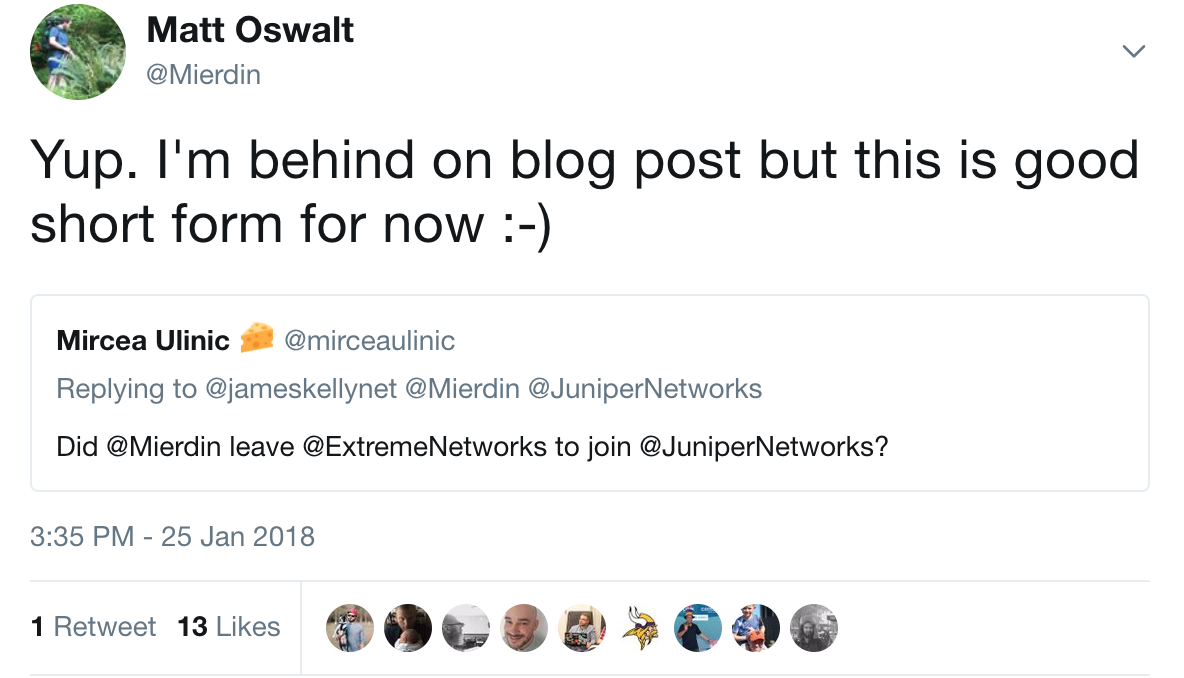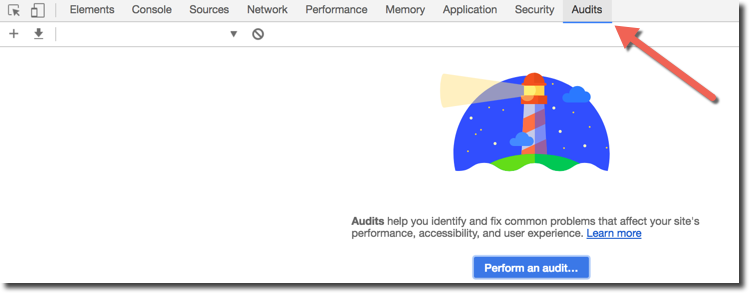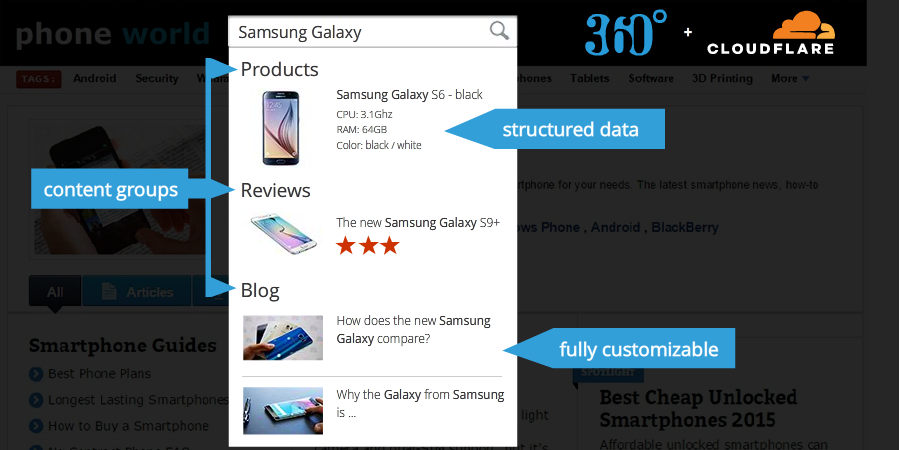New Role, Same Goal
I recently gave a presentation at Network Field Day 17 wherein I announced that not only was I about to give probably the most compressed talk of my life (time constraints are unforgiving) but that I also was now working for Juniper. Until today, this was pretty much the most explanation I had time to give:
I decided to accept a position with Juniper over the 2017 holiday, and I started last week. There were a few reasons for moving on from the StackStorm team, some of which are personal and have nothing to do with either day job. Despite the move, all of these things are still true:
- StackStorm is and continues to be an awesome project. Regular updates are happening all the time, each full of tons of new features and fixes.
- The StackStorm team and Extreme Networks as a whole are some of my favorite people ever. I will never forget everything I learned from them, and will try my best to stay in contact with all of them.
- The concepts behind StackStorm, such as infrastructure-as-code, and autonomous response to events, are still top-of-mind for me. I still strongly believe that each of these concepts are Continue reading





 Huawei says it has no expectations of doing business with the U.S. government.
Huawei says it has no expectations of doing business with the U.S. government. Cavium plans to continue expanding into the popular HCI sector.
Cavium plans to continue expanding into the popular HCI sector.

